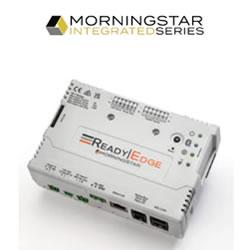Can Renewable Energy Keep up With AI's Massive Demand?
.jpg)
Artificial intelligence is moving out of labs into everyday life, powering design, logistics, search and new kinds of creativity. Behind the technology, though, sits a hungry hardware stack — servers, chips and data centers that run nonstop need a steady power supply. That appetite is growing as AI models become larger and services expand to more users.
This raises a question with significant implications — can renewable energy scale fast enough to feed AI without compromising climate goals? Solar, hydro, wind, geothermal and storage offer an answer if industry and policymakers pair these solutions with smart planning, modern grids and bold investment.
How AI Is Changing Global Energy Demand
AI is reshaping electricity demand as cloud platforms, machine learning and always-on inference drive 24/7 computing in hyperscale data centers.
In the United States, data centers reportedly used around 4.4% of electricity in 2023 and are projected to reach roughly 6.7% to 12% by 2028. Lawrence Berkeley National Laboratory’s scenarios project AI-specialized servers will become the largest slice of data center electricity by 2028. Independent studies translate this to AI alone consuming the same amount of electricity as 22% of U.S. households annually.
At the micro level, Google says that a median Gemini text prompt uses 0.10 watt-hours, needs 0.12 ml of water and gives off 0.02 gCO2e when measured only under an active-chip-only metric, highlighting the need for consistent accounting. Globally, the International Energy Agency (IEA) expects data center electricity needs to surge this decade as AI adoption expands, with AI emerging as a major load alongside streaming, storage and crypto.
The Current State of Renewable Energy
Renewables are here to stay, expanding rapidly and reshaping the global power mix. By the end of 2024, renewable power made up about 46% — 2.2 terawatts — of the world’s installed capacity.
In that year alone, new renewable capacity grew by roughly 25% to around 700 gigawatts, with solar photovoltaics providing more than three-quarters of additions and wind contributing most of the rest. On the generation side, clean electricity surpassed 40% of the global supply in 2024, led by hydropower, then wind and solar.
Understanding data centers as energy actors starts with their components — servers equipped with central processing units and graphics processing units perform the computing and, on average, account for 60% of modern facilities’ electricity demand, although the share varies per site.
The progress is evident, but there are still limits. Intermittency requires storage, smarter grids and firm resources, while congestion and interconnection queues drive renewable curtailment in several areas. All the pressures grow as new data center loads cluster on constrained networks.
Innovations Bridging the Gap
New tools are closing the gap between AI’s power needs and clean supply. Demand response and smart grids shift workloads and curb use. Google already moves flexible compute to cleaner regions and optimizes timing through carbon-aware scheduling. AI-powered energy management tunes cooling and server loads. On supply, battery fleets are arriving fast, with solar-plus-storage leading 2025 U.S. capacity additions.
Flexible generation is rising. Google’s Nevada geothermal project delivers 24/7 clean power, while Microsoft pilots hourly-matched power purchase agreements (PPAs) in Sweden. Adoption continues to spread, as 74% of executives use AI for over 25% of their activities.
Can Renewables Scale Fast Enough?
AI’s surge collides with the current pace of clean-power buildouts. A U.S. Department of Energy analysis suggests that due to large AI workloads, data center electricity could hit 12% of the grid by 2028. This could force utilities and developers to add low-carbon supplies faster.
Training tilts the demand upward. GPT-4’s training uses around 50 gigawatt-hours and $100 million — evidence that computing intensity translates directly into real power needs.
Model scale magnifies this effect, with GPT-4 falling in the trillion-plus parameter range and open releases like DeepSeek-V3/R1 listing 671 billion parameters. Larger models mean more chips, racks and cooling, plus greater load. DeepSeek is also working toward artificial general intelligence, aiming for human-like breadth, which is another sign that frontier models will continue to push the boundaries of power systems.
In parallel, policymakers are exploring resources that can run around the clock. Nuclear adds firm, carbon-free power for 24/7 data center loads. Small modular reactors could co-locate with campuses, but high costs and long timelines make it a longer-term complement.
Renewables can keep up if deployment accelerates and grids modernize. The IEA points to storage and smarter networks as essential components for fast-rising solar and wind, enabling variable output to meet round-the-clock training and inference needs. Without such upgrades, interconnection bottlenecks and siting limitations risk letting AI demand outpace clean supply.
Policy, Investment and the Path Forward
Governments are accelerating buildouts via tax credits from the U.S. Inflation Reduction Act and Europe’s Net-Zero Industry Act, to name a few. Corporate PPAs and utility partnerships are also scaling finance.
The IEA projects the U.S., China and Europe to lead data center electricity demand, with Southeast Asia more than doubling by 2030. China and the U.S. drive nearly 80% of global growth. To keep pace, permitting should be streamlined, transmissions expanded, and grid and storage modernization investments de-risked.
The Road Ahead for AI and Renewables
AI’s power needs are increasing, but renewables, storage and smart grids are closing the gap. There’s an opportunity for cleaner electricity and resilient systems, but the challenge lies in siting, speed and supply chains. Renewables can keep up if governments, grid operators and tech buyers align on faster permitting, modernized grid networks and long-term contracts. That said, stakeholders should fund storage, strengthen transmission and share best practices.
Comments (0)
This post does not have any comments. Be the first to leave a comment below.
Featured Product

